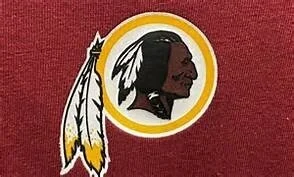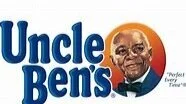It’s official: Edmonton's Canadian Football League team will discontinue the use of the word "Eskimo" in the team's name (1). The team's current name has been criticized as insensitive or even racist.
What’s the problem?
Upon hearing the news, I was somewhat taken aback. You see, I am rather a fan of the CFL. In the East I cheer for the Montreal Allouettes (my home town). In the West, I cheer for the Saskatchewan Roughriders (my father’s home town). This has been the rule for decades of my life. And during all those years I have I never considered the word “Eskimo” to be derogatory. And I can’t remember ever hearing it used in a negative way. After all, doesn’t the word “Eskimo” refer to one of the hardiest peoples in the world? I mean, they occupied and survived eons in one of the toughest climates on earth. How does one not feel anything but respect and awe for such a people?
So I admit, the issue of changing the “Edmonton Eskimos” trademark/name, hit me in a strange way. It confronted my pre-established truths. No doubt countless fans and even players of the team were struck in the same way (2).
But upon reflection, and as I was doing my research, it occurred to me that although the word may not be offensive to me, it might be offensive to those it referred to: The Inuit!
Where did the word come from?
The origin of the word Eskimo is uncertain. Some scholars claim it derived from the Ojibway language (still spoken today) meaning "eaters of raw meat”. Others claim it means “one who laces snowshoes”, some mid-century anthropologists suggested that the word came from the Latin word excommunicati, meaning the excommunicated ones because the native people of the Canadian Arctic were not Christian. (3)
As interesting as the etymological origin may be, what matters presently is that the Europeans, who first exchanged with the Inuit, did not ask them what they thought. They just decided this was the word to use, just like they decided so many other matters, like imposing their way of life and religions. For well over the last century, this issue took a back seat to more pressing concerns, namely survival in a very harsh environment. It is only since achieving a greater sense of security and self-awareness that it became a topic of concern and a cultural demand for the Inuit.
This being said, it is clear in my mind that the adoption, in 1911, of the ‘Edmonton Eskimos’’ brand by the Edmonton Football Team was done with respect for the “Eskimo” peoples. However, the world has changed and good intentions are no longer sufficient. The perception of cultural groups can no longer be ignored in the face of recent and sweeping societal changes.
One testimony I read that struck me is the following:
An Inuit named Arnaquq-Baril recalled a conversation she had at the dinner table with her mother about this topic (the Edmonton Eskimos)."For my mother, and for others, it [brings] up all kinds of awful memories," she said. "When a non-Inuk would come to the door of the house, we would often rush and hide the raw food out of shame, because they were so bullied and teased for being eaters of raw meat." (4)
So the word “Eskimos” is a problem
The owners of the Edmonton Eskimos had decided as early as last January, not to change their name. It is only recently, and after renewed consultations, that they changed their position and concluded that their brand was contentious. It would have been better if they hadn’t waited so long. But after the last few months, the pressure from the public (5) and also from sponsors (6) suddenly became too strong. Businesses are clearly not immune to social upheavals. (See our earlier article regarding the Washington Redskins® football team (7)).
Perhaps, with the help of branding experts, this event may even be given a positive spin: new fans and consumers could very well embrace the change if the new brand is chosen with respect of modern social realities.
In the meantime, the club intends on using the names “EE Football Team” and “Edmonton Football Team” until a new name is found.
Sources:
(1) https://www.cbc.ca/news/canada/edmonton/edmonton-cfl-team-name-1.5657661
(2) https://www.cbc.ca/sports/football/cfl/edmonton-cfl-team-name-former-players-1.5658486
(3) https://www.thecanadianencyclopedia.ca/en/article/eskimo
(4) https://www.cbc.ca/news/canada/north/inuit-reaction-edmonton-cfl-team-name-change-1.5658904
(6) https://www.cbc.ca/news/canada/edmonton/edmonton-cfl-team-name-1.5657661
(7) https://rsgmarques.ca/blogue/Washington Redskins
* * *





